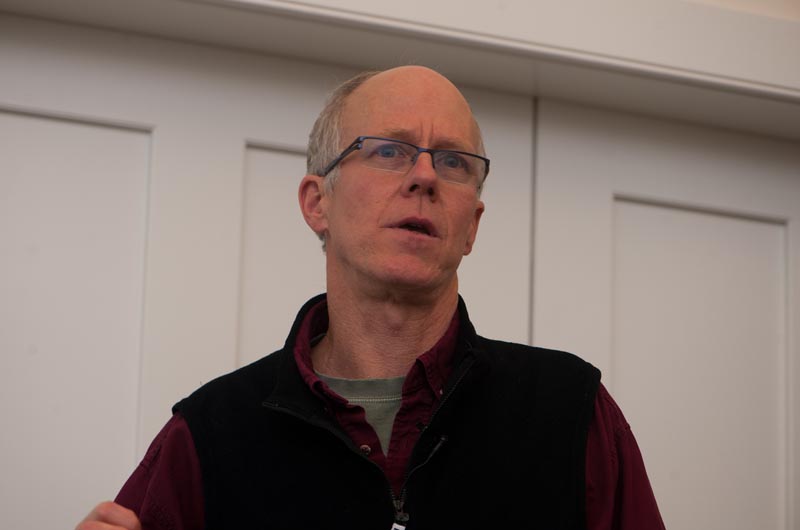The rainbow cliffs of Gay Head, the commercial fishing boats of Menemsha, the ever-present MV bumper stickers, and other Vineyard icons may soon encounter a new kid on the block: golden mussels.
For the past year, the Martha’s Vineyard Shellfish Group, along with Scott Lindell of the Marine Biological Laboratory in Woods Hole, have been quietly working on a project to breed golden mussels (a variation of the common mussel, Mytilus edulis) in the hope of creating a brand identity for the Vineyard and bolstering the local shellfishing economy.

Golden mussels exist naturally around the Vineyard, but not in large numbers, and their shells often fade with age. The goal of the project is to create a unique product for local mussel growers.
“If the Vineyard could develop its own gold brand of mussels it might be something that would be cherished,” said Mr. Lindell, who is director of the scientific aquaculture program at MBL and helped get the project started in 2013.
Scallop farmers in the northeast and in Asia already use selective breeding to create pink, purple, orange and white scallop shells. But Mr. Lindell was unaware of other communities that are breeding golden mussels.
The process involves finding samples in the wild and putting them together so they can breed. The shellfish group did two spawnings at its nursery last year, resulting in many baby golden mussels. “From that you can grow them up and select the most gold, along with the ones that maybe grow the fastest, and cross those with each other,” said shellfish group special projects coordinator Emma Green-Beach, who is managing the project.
“It’s really similar to any of the basic selective breeding that’s been done in agriculture on farms forever,” she added. “It doesn’t require any chemicals, it doesn’t require any super-fancy genetic manipulation.” The process itself would be easily transferable to other aquaculture farms.
The goal is to develop a strain that grows quickly to market size and doesn’t lose its color. The shellfish group plans to eventually add some of the mussels to an aquaculture farm in Vineyard Sound.
Ms. Green-Beach said the seed that makes it through this winter might be available for market in the fall, but added that it was too soon to know what people might be willing to pay. She hoped to get feedback from seafood dealers in the near future. As a local aquaculture product, “it could very well get a higher price,” she said.
“It tastes and acts just like a regular blue mussel,” said Mr. Lindell, who pointed out that the cultivated seed is as durable as wild seed.
“Mussels are served in the shell, so it would have a distinct table appearance and possibly, in the right kind of restaurant, might provide the grower with some added value to the product,” said Rick Karney, director of the shellfish group.
The golden mussel project is funded by a mini-grant from the Northeastern Regional Aquaculture Center in Maryland. Ms. Green-Beach said the long-term success of the project would depend on continued funding.
“Selective breeding takes multiple generations, and isn’t something you can achieve within one small grant that lasts two years or so,” she said. So far, the long-term outlook for the project remains unclear.
More than 90 per cent of the mussels consumed in the U.S. are imported, mostly from Canada, contributing to an annual seafood trade deficit of more than $10 billion. The shellfish group and the MBL are among a small group of organizations funded by NRAC to develop offshore mussel farms that could help revitalize local fishing economies. The Island’s first offshore blue mussel farm, in Vineyard Sound, was recently taken over by Menemsha Fish Market owner Stanley Larsen.
The golden mussel project would serve largely the same purpose.
“That special gold color, you can’t select in the wild,” said Mr. Lindell. “And if it gives you a better price in the marketplace, it may be worth growing it for that purpose alone.”




Comments (17)
Comments
Comment policy »